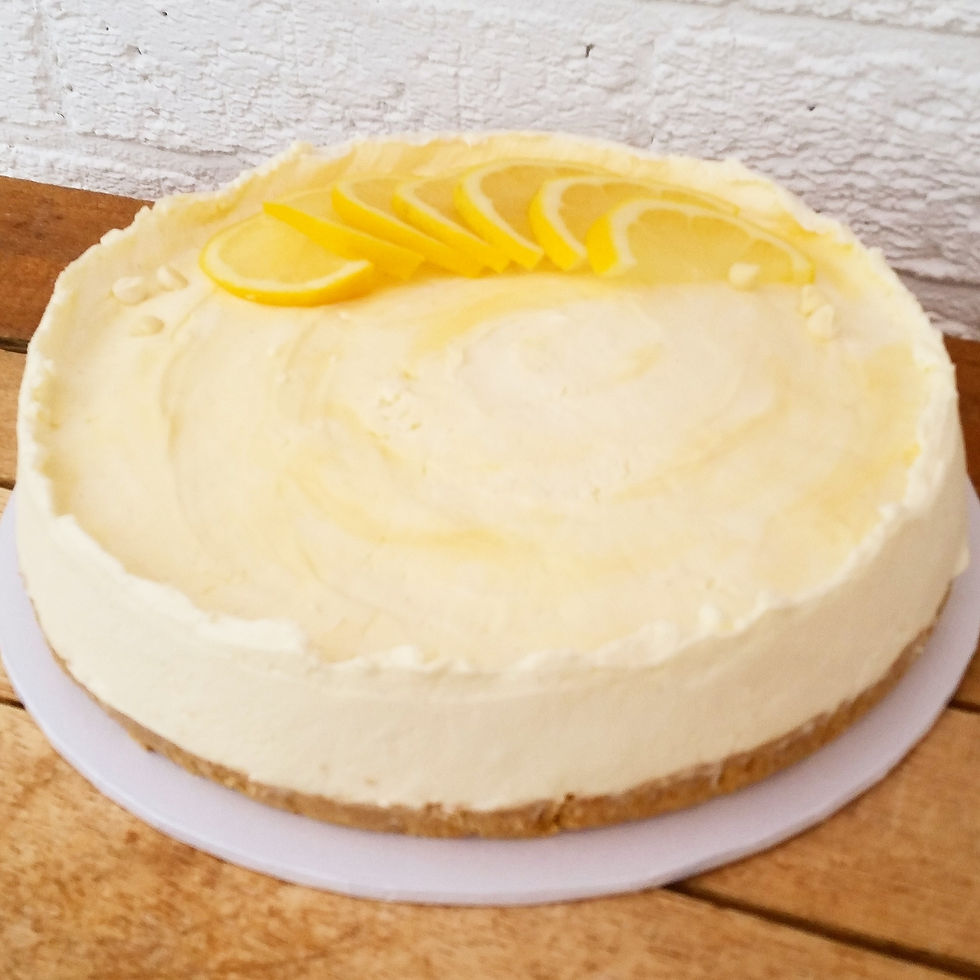Lemon & Poppy Seed Scones
- Janine Ogden
- Sep 3
- 3 min read

The secrets for a nicely shaped, well risen scone:
Handle the dough as little as possible - you shouldn't really be kneading it, other than to just bring it together.
Cut with a sharp metal cutter, or a sharp, flat-bladed knife that's been dusted with flour, and don't twist when you cut - just straight down and lift straight back up.
Glaze/wash on the very top only - don't paint the sides, and try not to let it drip either.
I prefer to cut into triangles for that lovely modern, rustic look, and also because then we don't then get that couple of misshapes in every batch from re-rolling the dough, just like in the picture here! Do what you prefer though.
If you only have plain flour, use 2 and a half teaspoons of baking powder (in total).
Lemon & Poppy Seed Scones
Makes 6 large scones
Ingredients:
300g self raising flour
half a tsp baking powder
three quarters of a tsp salt
75g butter or marge. If you want to go proper old school traditional (and much cheaper!) you could use lard
40g sugar
Zest of 1 or 2 lemons, or 1 tsp lemon extract. Adjust this depending on how zesty you prefer the flavour
200ml milk
2 tbsp lemon juice
10g poppy seeds
Method:
Preheat the oven to 220C/200C fan. Lightly oil a baking sheet.
Mix the milk with the lemon juice and leave to stand for 5 minutes.
Sieve together the flour, salt and baking powder.
Add your choice of fat and rub into the flour, until the last few pieces of fat are tiny.
Stir in the sugar, poppy seeds and lemon zest if using.
If using lemon extract, stir it into the milk mixture, and then gradually add the milk mixture to the dry ingredients, folding with a large metal spoon or a large palette knife until just combined, and no more. You might need to get your hand in there, to get the last few crumbs to incorporate. Once the dough has come together it should be soft and slightly sticky. You should not need all of the milk mixture - reserve some for brushing the tops later.
Tip onto a lightly floured work surface, and very gently shape into a round. Dust your rolling pin with flour and roll out to about an inch (2.5cm) thick.
Cut the dough into 6 triangles with a large sharp knife that's been dusted with flour - not a serrated one. Or if you prefer round scones, use a 10cm metal cutter, dusting the cutter with flour between each cut. Either way, cut quickly and cleanly, just press down and lift back up without twisting. This helps the scones rise better.
Lift onto the oiled baking tray, handling the scones as gently as possible.
Dab the reserved milk mixture across the tops only - don't put any on the sides.
Bake for approx. 12 minutes until golden brown.
Leave to cool on the tray.
Serve warm with loads of proper butter, and/or lemon curd if you fancy something sweeter.
Store scones in an airtight container, and they're always best eaten the same day. They freeze well though, but keep them airtight and eat as quickly as possible once defrosted. If they go a bit stale, you can split and toast 'em, and slather with melty butter.


Comments